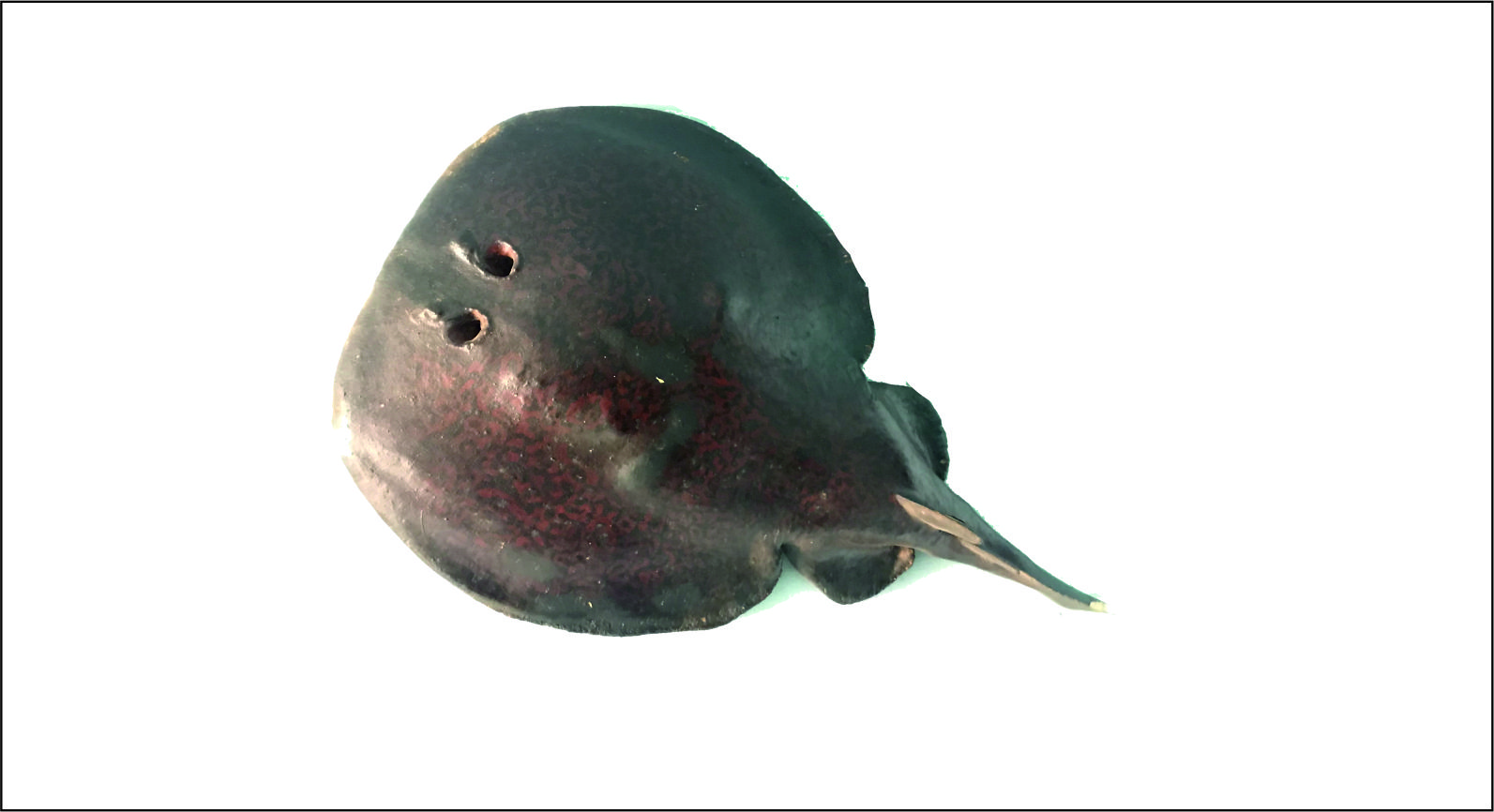
Spotted numbfish
(Narcine timlei)
| Class: | Chondrichthyes |
| Order: | Torpediniformes |
| Family: | Narcinidae |


Distribution and habitat
- Found in Indo-West Pacific: Arabian Sea (Pakistan) to South-East Asia (Thailand, Malaysia, Singapore, Indonesia, Vietnam and southern China).
- Found in continental waters, both inshore and offshore Occurs over soft sandy or muddy bottoms.
About the fish
- It is a cartilaginous fish, marine; demersal fish and reaches a maximum total length of 38.0 cm
- It have a rounded pectoral fin disc and two dorsal fins.
- Eyes are small, so it depend on electroreceptor ampullae of Lorenzini to detect prey.
- It is usually found buried in sand and ambush on prey with electric shock.
- Kidney shaped electric organs on head are able to produce electric shock.
- They judge the size of fish and grabs the prey on pectoral fins then blast it with shock.
- The spiracles are close behind the eyes on upper side.
- Mouth and gill slits are present on the under side.
- Mouth has rounded teeth, jaws can be extended to swallow large fishes.
- It breaths by taking water through the spiracles, and after taking oxygen, water is pumped out through the ventrally placed gill slits.
- It has a vertical tail fin like shark.
- They propel slowly by swaying its tail side wise, instead of flapping its pectoral fins
- These coastal dwellers prefer hiding in sand and mud or seagrass during the day, and foraging for crustaceans, marine worms, and other small prey at night.
- Are Ovo-viviparous – embryo develop inside mother’s body until they are ready for live birth
- Gravid females produces 2-3 pups during each gestation.
